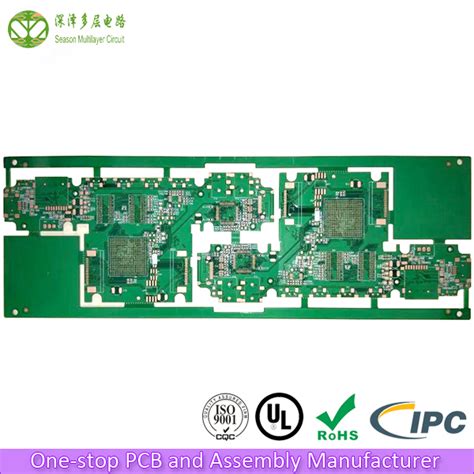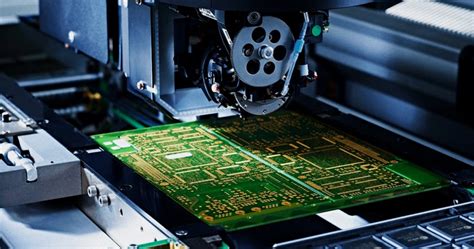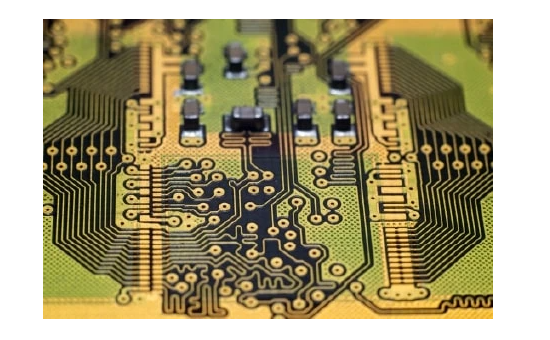Mastering Circuit Board Fabrication: A Comprehensive Guide
Key Takeaways
In the realm of pcb manufacturing, understanding the various aspects of circuit board fabrication is essential for achieving optimal results. You must be aware that pcb manufacturing companies often focus on specific processes, allowing you to identify which company aligns best with your project needs. The pcb manufacturing cost can vary significantly based on materials and design complexity, so it’s crucial to assess your requirements and budget early on. This insight will aid you in selecting a partner for your pcb manufacturing business that offers both quality and affordability. By mastering these key takeaways, you are better positioned to navigate the intricate landscape of circuit board fabrication, ensuring your projects not only meet technical specifications but also get delivered on time and within budget constraints.
Introduction to Circuit Board Fabrication
Understanding pcb manufacturing is crucial for any designer or engineer looking to create efficient and reliable electronic products. The pcb manufacturing business encompasses a range of processes that transform raw materials into functional circuit boards. In this journey, you’ll encounter various pcb manufacturing companies that specialize in producing high-quality printed circuit boards (PCBs).
At the heart of circuit board fabrication lies the intricate interplay between materials and techniques. You will discover that the pcb manufacturing cost can fluctuate significantly based on factors such as complexity, volume, and material choice. Industry leaders emphasize the importance of material selection for enhancing performance and ensuring durability.
Moreover, understanding how different techniques affect manufacturing can lead to substantial improvements in production efficiency. For instance, techniques such as etching and layering are essential in defining the board’s functionality, while advanced methods like surface mount technology (SMT) enable smaller footprints and enhanced performance.
To clearly outline some key elements of the pcb manufacturing process, consider this table:
| Process | Description |
|---|---|
| Design | Creating a schematic layout for the PCB |
| Etching | Removing excess copper to form pathways |
| Layering | Stacking multiple layers for complexity |
| Assembly | Mounting components onto the board |
“Choosing the right technique can greatly enhance your PCB’s functionality while reducing costs.”
Through effective planning and understanding of these dynamics, you can navigate the complexities of circuit board fabrication with confidence, ensuring that your designs stand up to both performance standards and cost-efficiency. Explore continually to stay ahead in this evolving field; you can start your journey by checking resources available at Andwin PCB.
Essential Materials and Components
In the world of pcb manufacturing, selecting the right materials and components is crucial for ensuring the functionality and reliability of your circuit boards. At the heart of any printed circuit board (PCB) lies a substrate, typically made from materials like FR-4, which is a glass epoxy material known for its excellent insulation properties and durability. You’ll also need to consider the type of copper used; standard thicknesses range from 1 oz to 2 oz, each suitable for different applications. Moreover, understanding the impact of pcb manufacturing cost can help you make informed decisions regarding component choices without compromising quality.
When working with pcb manufacturing companies, you’ll find that connectors, resistors, capacitors, and other electronic components play a fundamental role in your designs. It’s essential to choose components that meet industry standards to guarantee compatibility and performance. Furthermore, attention should be given to surface mount technology (SMT) versus through-hole technology; each has its own merits depending on your specific project requirements.
The selection of high-quality solder materials is another vital aspect in this process. Choosing lead-free solder can contribute to a more environmentally friendly pcb manufacturing business, aligning with global sustainability goals. As you navigate the intricate landscape of materials and components in PCB design, keeping these elements in mind will fortify your path toward successful circuit board fabrication, ultimately leading to optimal performance in your final products.
Key Techniques in PCB Manufacturing
In the world of PCB manufacturing, various techniques come into play to ensure that the final product meets both functionality and performance expectations. One of the most essential processes is etching, where unwanted copper is removed from the surface of the circuit board, creating the desired circuit patterns. This process is followed by lamination, which involves bonding together layers of material to form a solid structure that can support electronic components. Understanding these steps is crucial for anyone involved in pcb manufacturing business, as it directly impacts turnaround times and overall quality.
Another key technique is drilling, where precision holes are made for component placements. The accuracy of these holes significantly influences how well components fit and function on the board. Furthermore, soldering techniques—both manual and automated—play a pivotal role in ensuring secure connections between components and the board itself. This affects both pcb manufacturing cost and product reliability, making it crucial to choose reliable pcb manufacturing companies that use advanced soldering technologies.
In modern production environments, integrating computer-aided design (CAD) software into your processes can lead to greater accuracy and efficiency, allowing you to design complex circuitry with ease. Engaging with these key techniques not only enhances your skills but positions you strategically within a competitive pcb manufacturing landscape, which continues to evolve as technology advances. Keeping abreast of these methods will be vital in ensuring your projects meet industry standards while optimizing costs and production timelines.
Prototyping vs. Production Boards
When delving into pcb manufacturing, understanding the distinction between prototyping and production boards is crucial. Prototyping boards are typically designed for the initial phases of development; they focus on validating design concepts and testing functionalities. This process allows you to iterate quickly, make adjustments, and explore various designs before committing to a large-scale production run. On the other hand, production boards are optimized for reliability, efficiency, and cost-effectiveness. These boards undergo thorough testing and are manufactured in larger quantities, often through established pcb manufacturing companies that guarantee consistency in quality and compliance with industry standards.
The pcb manufacturing cost plays a pivotal role in determining the route you take; prototyping can often be executed at a lower expense due to fewer material requirements and simpler production methods. However, investing time in creating high-quality prototypes can lead to significant savings during mass production phases because it minimizes errors that could arise later. Understanding these fundamental differences empowers you to make informed decisions regarding your pcb manufacturing business strategy, ensuring that each project meets its unique requirements effectively while maintaining budgetary constraints. By recognizing when to utilize prototyping versus full-scale production processes, you position yourself for greater success in your circuit board design endeavors.
Quality Control in Circuit Board Fabrication
In the realm of pcb manufacturing, quality control is a critical element that ensures the reliability and performance of your circuit boards. Implementing stringent quality assurance measures throughout the pcb manufacturing process can significantly reduce defects and enhance the overall yield of your production. Start by establishing clear guidelines and standards for every stage, from selecting materials to final inspection.
Engaging with experienced pcb manufacturing companies will provide you with essential insights into industry best practices. These companies often leverage advanced technologies such as Automated Optical Inspection (AOI) and X-ray analysis to detect flaws that may not be visible to the naked eye. Incorporating these advanced testing methods can drastically lower your pcb manufacturing cost, as you’ll reduce the risk of expensive returns and rework.
Moreover, fostering a culture of continuous improvement in your pcb manufacturing business is crucial. Educating your team about common failure modes, encouraging open communication, and regularly reviewing QA protocols will ensure adherence to quality standards. By prioritizing rigorous quality control practices, you’re not only safeguarding your own reputation but also enhancing client trust in your ability to deliver exceptional products consistently.
Advanced Circuit Board Technologies
Advancements in pcb manufacturing are continuously transforming the landscape of electronic design and production. As you explore options in pcb manufacturing companies, you will discover that cutting-edge technologies such as automated assembly, advanced materials, and 3D printing are becoming increasingly prevalent. These innovations not only improve efficiency but also enhance the precision of your designs. For instance, utilizing advanced materials like flexible substrates or high-frequency laminates allows for the creation of more compact and functional circuit boards, meeting the demands of increasingly intricate electronic devices. When considering the overall pcb manufacturing cost, it’s essential to balance quality with innovative solutions to remain competitive. Engaging with a reliable pcb manufacturing business that prioritizes modern techniques could lead to significant gains in both performance and cost-effectiveness. Additionally, leveraging tools like simulation software can help you refine your designs before committing to production, ultimately saving time and resources in the assembly process. Embracing these advanced technologies can enable you to stay ahead in a rapidly evolving market, allowing for creativity and efficiency in every project you undertake.
Best Practices for PCB Design and Layout
When diving into PCB design and layout, adhering to best practices can fundamentally enhance the quality and functionality of your circuit boards. One of the foremost considerations is the selection of appropriate materials, which plays a crucial role in pcb manufacturing. Ensure you choose high-quality substrates that can withstand thermal and mechanical stresses during operation. Additionally, focusing on component placement is essential; you should strategically position components to minimize the lengths of traces, thereby reducing inductance and capacitance that could interfere with signal integrity.
In your layout, maintaining proper clearances between traces is vital to avoid unintentional shorts or crosstalk between components. Utilize software tools that allow you to simulate your design before committing to pcb manufacturing, as they can help identify potential design flaws early in the process. Furthermore, it’s wise to incorporate ground planes in your design; they help in reducing electromagnetic interference (EMI) and improve overall circuit performance.
Ultimately, understanding the pcb manufacturing cost implications is essential when designing your boards. Engaging with reputable pcb manufacturing companies will not only guarantee a higher-quality product but also provide insights into how certain design choices can affect costs. By prioritizing precision in your layout from the onset, you lay a solid foundation for successful pcb manufacturing business outcomes, ensuring that both prototypes and production models meet industry standards while being cost-effective. Always remember that a well-thought-out design is half the battle won in circuit board fabrication.
Future Trends in Circuit Board Fabrication
As technology continues to evolve, so do the pcb manufacturing processes and technologies that underpin modern electronics. One significant trend you may notice is the increasing adoption of advanced materials and techniques aimed at improving the performance and reliability of circuit boards. For instance, flexible PCBs are gaining traction as they allow for innovative designs in compact spaces where traditional rigid boards fall short. Additionally, the rise of automated manufacturing processes is likely to reduce the pcb manufacturing cost, making it more accessible for smaller businesses or startups venturing into the pcb manufacturing business. Consequently, these advancements are not only enhancing production efficiency but also offering you better options when selecting pcb manufacturing companies capable of meeting diverse requirements. Emphasis on sustainability is another trend, as manufacturers increasingly seek eco-friendly materials and processes to minimize their environmental impact. Staying aware of these developments in circuit board fabrication can significantly affect how you approach your designs and production choices in this rapidly changing landscape.
Conclusion
In your journey through pcb manufacturing, you have likely gained insights that underscore the importance of precision and innovation in this field. As you delve deeper into the intricate processes involved, it’s clear that the choice of materials and components significantly influences the overall pcb manufacturing cost. Understanding these elements allows you to balance quality with budget constraints, a crucial aspect for both startups and established pcb manufacturing companies. Moreover, staying updated on emerging technologies plays a vital role in enhancing your capabilities within the pcb manufacturing business landscape. By adopting best practices in design and layout, you enhance not only the performance of your boards but also their reliability in real-world applications. Moving forward, leveraging these insights will empower you to produce prototypes and production boards that meet or exceed industry standards, positioning you for success in an ever-evolving market.
FAQs
What is PCB manufacturing?
PCB manufacturing refers to the process of creating printed circuit boards (PCBs) that are used as the foundational elements in electronic devices. It involves various techniques and methods to build layered boards that facilitate electrical connections.
How do I choose the right PCB manufacturing companies?
When selecting pcb manufacturing companies, consider factors such as their reputation, quality of materials used, turnaround times, and customer reviews. Reputable companies typically offer a wide range of services, including prototyping and mass production.
What factors influence PCB manufacturing cost?
The pcb manufacturing cost can be affected by several elements such as board complexity, size, material selection, quantity ordered, and any additional services like testing or assembly. It’s essential to evaluate these aspects to receive an accurate quote.
How can I start a PCB manufacturing business?
To start a pcb manufacturing business, you should research market demands, develop a robust business plan, secure financing for equipment and materials, and choose a facility that meets your production needs. Networking with suppliers and potential clients is also crucial for success.
For more information on enhancing your understanding of pcb manufacturing, please visit this link.







